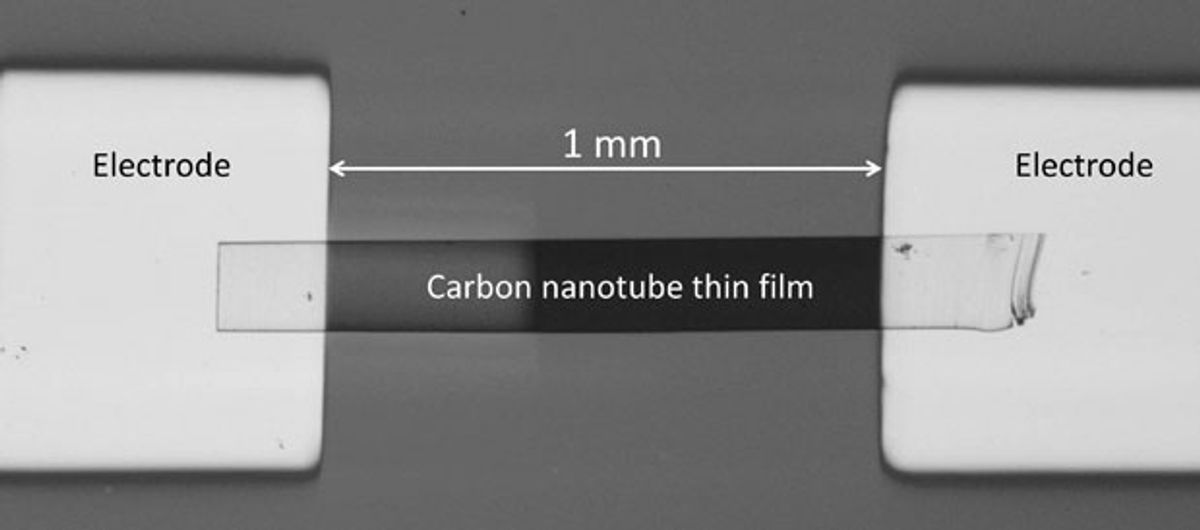A new type of detector for terahertz radiation, made from carbon nanotubes and requiring no power to operate, could usher in better airport scanners, new medical imagers, and more sensitive instruments for inspecting food and machine parts.
The detector is an array of carbon nanotubes made into a thin film 1 to 2 micrometers thick, grown on a layer of silicon. Previous attempts to use nanotubes as terahertz detectors proved difficult, because an individual nanotube had to be attached to a much larger antenna to collect the radiation. In this case, the terahertz photons are caught by a small but visible array, about 100 µm wide and roughly a millimeter long. Robert Hauge, a chemist at Rice University, in Houston, Tex., and Francois Leonard, of the Nanophotonics and Nanoelectronics Group at Sandia National Laboratory, in Livermore, Calif., and their colleagues describe the work in a recent paper in Nano Letters.
To make the array, researchers etched lines into the silicon and added iron/aluminum oxide catalysts. They then used chemical vapor deposition to grow aligned carbon nanotubes from those catalysts. The process naturally produces a mix of metallic and semiconducting nanotubes, with the overall array having an excess of positive charge. They then transferred the array onto a thermally conducting substrate—either aluminum nitride, Teflon, or a combination of the two. Next they attached gold electrodes to either end. Finally, they placed a drop of benzyl viologen onto half of the array, turning the treated nanotubes from positive to negative and creating a p-n junction.
When terahertz radiation strikes the p-n junction, it causes a photothermoelectric effect; the nanotubes heat up and cause a current to flow. The team can then measure the current to tally up the T-rays reaching the detector. Nanotubes absorb light strongly across a wide range of wavelengths, so they don’t have to apply a voltage to get a photocurrent. In fact, the scientists were able to measure light from green in the visible region to the far end of the terahertz region.
Leonard says researchers still need to integrate the detector with a source of T-rays, as well as with electronics to better measure the incoming signal. Sandia is mainly focused on security applications of terahertz radiation, he says; that frequency can penetrate most materials and return a spectrographic signature, making it easy to detect drugs and explosives, but unlike X-rays it doesn’t damage human tissue. But terahertz radiation could also be used for non-destructive testing, for instance checking the thickness of coatings on pharmaceuticals or examining the quality of paint on a machine’s embedded components.
Neil Savage is a freelance science and technology writer based in Lowell, Mass., and a frequent contributor to IEEE Spectrum. His topics of interest include photonics, physics, computing, materials science, and semiconductors. His most recent article, “Tiny Satellites Could Distribute Quantum Keys,” describes an experiment in which cryptographic keys were distributed from satellites released from the International Space Station. He serves on the steering committee of New England Science Writers.



